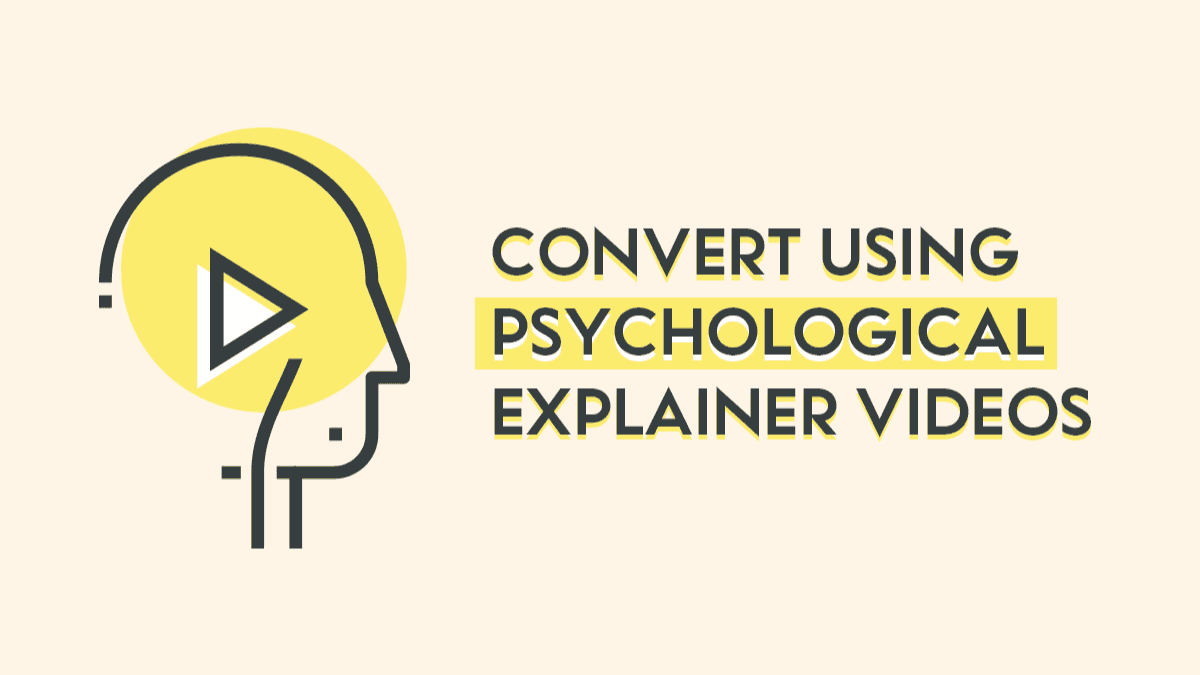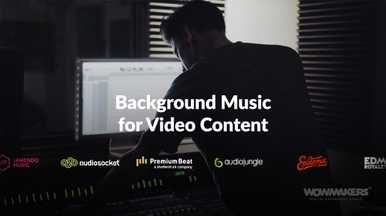Driving in lots of traffic or generating leads is just one phase of your business. Converting them into actual paying customers is an entirely different story. And if you’re reading this, you already know that explainer videos improve conversions.
That being said, not all animations can turn ordinary into customers. Let’s see how to use psychology to make your explainer videos highly converting. (I’d rather not use the psychological terms in this post)
How To Make Highly Converting Explainer Videos.
Note: Though all these tactics can be really leveraged to making your videos better, it doesn’t mean they’ll work everywhere. Identify where you need to make use of these and then apply the tricks. Don’t stuff your videos with these psychological tactics just because you wanted to. That’s the stupidest thing you could ever do.
Always keep these points in while making your video and see if you can apply them or not.
#1) Remember, Your Videos Are Being Watched By Herds Of Sheep.
Ever heard the term ‘Sheep Effect‘? It’s when we do exactly what others similar to you or around you are doing. In simple words, it’s when you follow the herd.

As cavemen, we used to believe that in order to survive, you need to stick to the group and follow the others. Or if you don’t know what to do, just do whatever others are doing. It used to be a survival technique. Often, our ancestors saved their asses by not doing anything adventurous or strange (different). And this knowledge of survival has been passed down to us through genetics. In certain ways, we are bound to follow the herd, especially when we’re confused AF.
A lot of persuasive marketers are leveraging this fact to make people buy something or to put them in a funnel. Would you believe me if I said you can do the same with explainer videos? Here’s what you need to do.
The truth be told: Using testimonials in explainer videos are boring. So these could get tricky. Well, you could do that without making your audience yawn. How?
- Use a quick common testimonial of a lot of customers together. Unleash your creativity! (This could work).
- Use numbers and stats that doesn’t stay around the screen for a long time. (Like how many have used it so for or the number of satisfied customers!)
Note: Please don’t stuff in numbers and stats just so that you can leverage the sheep effect.
#2) You Make A Line Smaller By Drawing A Larger One.
Doesn’t it make sense? Haven’t you seen that tricky challenge where they ask you to make a pencil line smaller without erasing it? All you gotta do is draw a bigger one next to it. Like a boss.
So, how can we use this on explainer videos to improve conversions?
- First address the problem that your audience is facing. Use the drama to make it look scary.
- Then introduce the product along with how they can use it to get over the problem.
When the product comes in as a solution right after they have almost wet their pants, it makes them think that the product is the angel from above. Our brain is built in such a way that we always compare two adjacent elements subconsciously. So, when the emotions brought in by fear is leveled by the solution to it, we perceive the solution as a superior one. Thus, making them instantly want the product. And if it’s free, there’s no doubt that they’re gonna turn into customers.
But what if the product isn’t free and it costs lets say $50? Well, now that you already have a better chance of converting them, you could improve the chances by using this same principle. How?
There are two ways you could do that:
Show $100 first and then animate it down to $50. Since they saw the larger amount first and then it becoming a lesser one, they are much likely to perceive it as a really small amount.

See how smaller the $50 is comparatively?
- Or there’s this neat and unbelievably trick you could use. When you show the product price, make sure that the size of the text is comparatively much smaller. I know this sounds stupid, but trust me, this works like a charm.
Would you rather share this post on Facebook or tweet it away?
#3) People Want What They Can’t Get. (Play Hard To Get?)
Ever wondered why we are so obsessed with items that are rare? Why people buy limited edition cars even though you could save a lot of money and drive around the same way like using other cars?
And that my friend, is the ‘Power of Scarcity‘. Even this theory goes back to our ancestors too.
Two things:
- They (us) believed that rare fruits are rare because a lot of people ate it and made it rare. (Doesn’t it link back to the Social Proof – Sheep Effect?)
- And rare items won’t be around for too much and they are limited for only some time.
Guess what? Our subconscious mind thinks the same. In fact, in a lot of scenarios, it’s true.
Remember that crush of yours who always played hard to get. What would have happened if he/she was way too friendly to you? Would the interest be the same?
Okay, now you know that this works, you might be wondering how to integrate the theory in your explainer videos. Did you know that our brain uses a lot of memory association? (We’ll come to that soon.)
Research says that people are likely to associate visual and audio elements to memories and emotions that are linked to similar elements in our past. So, what can you do about it?
- Subliminally include the sound of a clock ticking or even an animation of it so that the perceive the closely linked item as a limited time offer.
- Or use the light reflection glittering effects on the product picture. (Several companies have used this.) This makes them link the element to diamonds and gems that are really rare and even precious.
Sounds pretty Wowsome, right?
So, you’d rather share this on Google+, right?
#4) Memory Association Is The Marketing Dark Magic.
The post is coming to an end and you’re probably bored. Well, last but not the least, here are some effective ways to use memory association to make your explainer videos highly converting. (We WowMakers always keep the best for the last.)
People tend to believe things & even people with similarity. So, study the target audience and include objects that the same audience are likely to see everyday. This boosts the impression.
The power of authority has always been a weapon of mass influence. And when you combine it the effect of memory association, you’ve dark magic.
There’s a bigger chance of your audience trying out things suggested by the authority figure in the industry. So, how do you combine the power of authority with memory association?
Simple.
Use similar animated characters in the explainer video. Or, you could even use a similar voice-over. Replicate the authority figure.

Bonus Tricks To Make Explainer Videos Highly Converting.

- Use first person narration in your videos. And using “Me” & “My” are super effective.
- Remember Newton’s law of inertia (of motion)? A moving object continues to be in its state of motion until and unless an external force is applied on it. So, ask your viewers to take that first step instead of telling them the entire process. They’ll figure it out. (Tell them to visit a page instead of signing up and checking their email to confirm.)
- Put them in the fact loop. Studies say that we are likely to say yes to a question if it’s followed by facts they already know or statements that are true. So, before mentioning the product’s benefit, roll out a bunch of facts.
- Never end your explainer videos with the company logo. (Unless it’s for brand awareness.) Always use a great & simple call-to-action.
(Alas! I’m out of tips. Wait. Eat a lot of fibrous food. It helps!)
Remember, with great power comes great responsibilities. – Uncle Ben.







